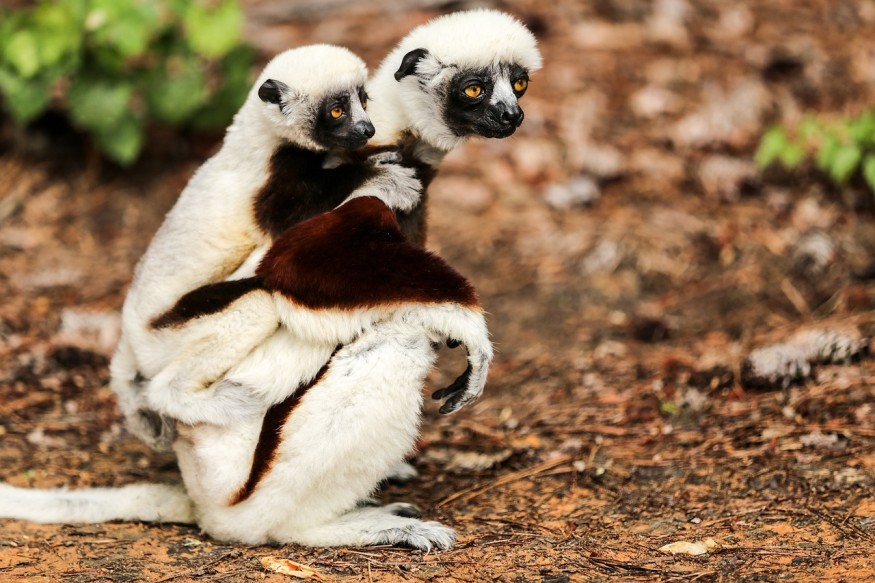The birth of the newborn Coquerel's sifaka was described as a "landmark event for the species" by Chester Zoo. A spokesman for the zoo said that the "wonderful child" was delivered to parents Beatrice and Elliot 18 months after the couple was relocated from the United States, BBC News reported.
Both mother and infant were "doing beautifully," according to mammals curator Mark Brayshaw. The species is only found in the wild in the northwestern treetops of Madagascar and has declined by 80% in the last 30 years owing to massive deforestation.

First Successful Breeding of Dancing Lemur in Europe
MailOnline reported that Coquerel's sifaka is known as the dancing lemur because they are distinguished from other lemurs by the manner in which they move, in which they retain an upright posture and leap side to side along the floor on their rear legs.
The baby dancing lemur was born on December 19, but zoo keepers will not know the baby's gender until it is roughly six months old and has separated from its mother's side.
Chester Zoo posted on Facebook that these wonderful lemurs are on the verge of extinction and so the birth of Beatrice's offspring is a milestone moment for conservation.
Brayshaw noted that it was a tremendously wonderful experience to be part of the conservation team in Europe and to successfully breed this unusual and rare primate for the first time. Its mother, Beatrice, is constantly nursing her baby and keeps it tucked in her fur while she hops from tree to tree.
In the coming weeks, as the baby grows, it will learn to ride on its back before it begins to branch out and learn to climb trees on its own at approximately six months old. By then, it will not be long until this bright-eyed baby dancing lemur will be jumping 20 feet between trees like its parents.
READ ALSO : Largest Lemurs With Weight Similar to Adult Humans Found to Have Attained Gigantic Size by Eating Leaves
Critically Endangered Coquerel's Sifaka
Coquerel's sifaka lemurs could grow up to 18 inches (46cm) tall with an 18-inch tail, which helps them balance, and weigh up to 13 pounds (3 and 6kg), as per MailOnline. They are herbivores commonly found in the northern region of Madagascar and are known for their unusual way of walking.
Moreover, these primates have a distinctive vocal call to ward off predators and locate one another. They rub their scent gland in their throat along branches to mark their path and attract potential mates.
Sadly, they are losing their natural habitat due to grazing land for cattle, while trees were used to make charcoal. The International Union for the Conservation of Nature (IUCN) deemed the species critically endangered in 2018 because of the amount of deforestation that devastated their habitat.
The baby dancing lemur's parents are both ten years old and were moved from 4,000 miles from Duke Lemur Center to Chester Zoo to start a conservation breeding program for them.
Chester Zoo director of animals and plants Mike Jordan said that the situation of Coquerel's sifaka is desperate and the program could be a lifeboat to prevent them from becoming extinct. In Europe, there are only seven of them are living in zoos in which the family of three is now in the UK.
RELATED ARTICLE: 33% of Lemur Species Are on the Brink of Extinction, Deforestation and Hunting Are to Blame
Check out more news and information on Lemurs in Science Times.
© 2025 ScienceTimes.com All rights reserved. Do not reproduce without permission. The window to the world of Science Times.











